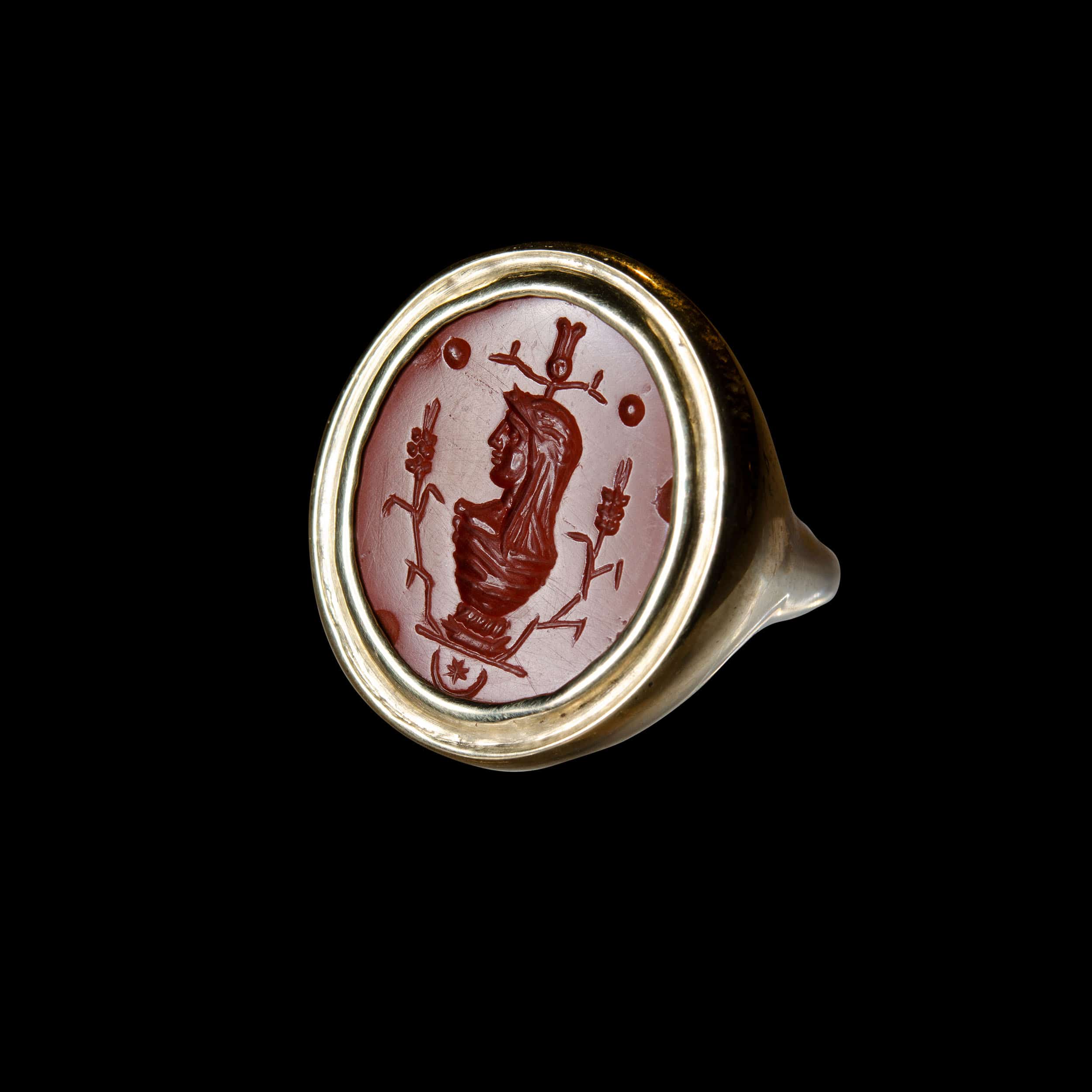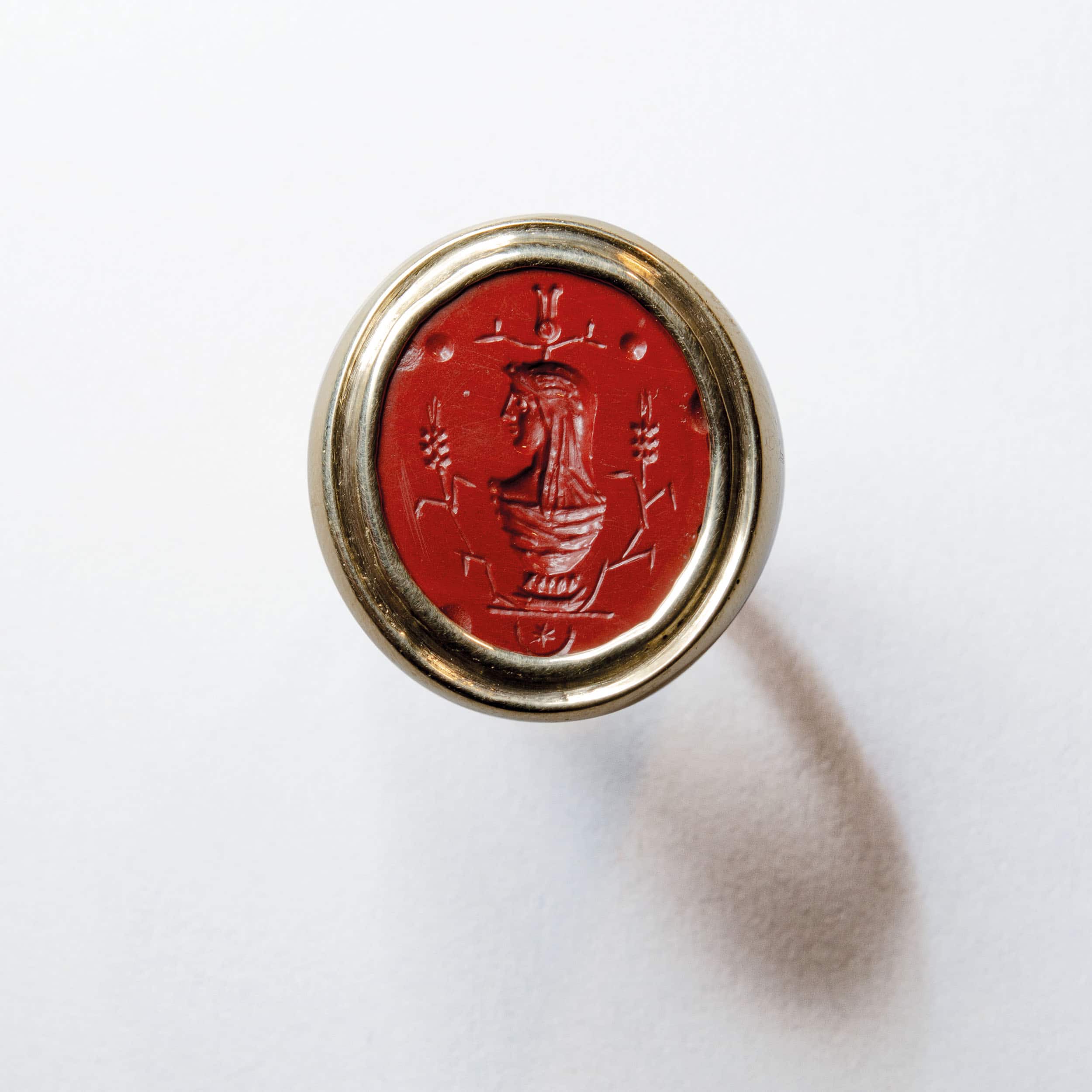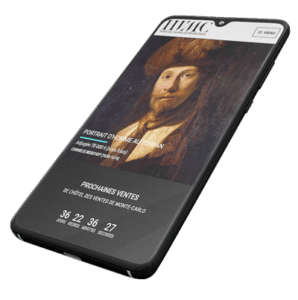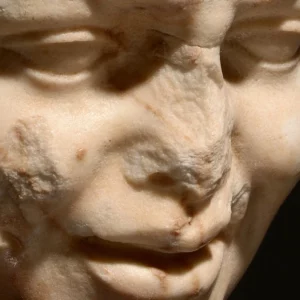Art romain, IIème siècle
Intaille en jaspe rouge ; 16 x 19 mm
Monture en or 9 cts ; diam (int) 18,5 mm ; TD_59 ; 11,9 grs
Provenance
Paris, collection privée
AN IMPORTANT RED JASPER INTAGLIO SET IN A MODERN GOLD RING. ALLEGORY OF EGYPT. 1ST-2ND CENTURY A.D.
02/3 x 03/4 in. Intaglio. The allegorical composition is formed in the center by a canopic jar with the head of Isis (facing left) with a draped body (?) And wearing the atef crown. The vase rests on a short base line. Below, crescent moon with star. On each side of the canopic vase, two ears of wheat (ref. Egypt considered to be the «granary» of Rome). Above, on either side of the crown, two globes (the sun and the full moon?).
This representation is characteristic of Roman productions - with the filling of the field of various attributes, referring to a single allegorical meaning. Here, the presence of this canopic vase with the head of Isis, the wheat, and the astral attributes all refer to ancient Egypt and its influence on Imperial Roman art.
The executive style and technique refer to the 1st and at the latest the 2nd century, period of Egyptomania under Augustus then Hadrian. This fascinating composition refers to prosperity but also to the hereafter and to eternity. Signs of wear and slight chips on the edge. Extremely rare.
La composition allégorique est formée au centre par une jarre canope à tête d’Isis (tournée vers la g.) Avec un corps drapé (?) et coiffée de la couronne atef. Le vase repose sur une courte ligne de base. Au-dessous, croissant de lune avec étoile. De chaque côté du vase canope, deux épis de blé (réf. à l’Egypte considérée comme le «grenier à blé» de Rome). Au-dessus, de part et d’autre de la couronne, deux globes (le soleil et la pleine lune ?). Cette représentation est caractéristique des productions romaines – avec le remplissage du champ d’attributs variés, renvoyant à une seule signification allégorique. Ici, la présence de ce vase canope à tête d’Isis, le blé et les attributs astraux font tous référence à l’Égypte ancienne et à son influence sur l’art romain impérial. Le style exécutif et la technique se réfèrent au I er et au plus tard au II ème siècle, période de l’egyptomania sous Auguste puis Hadrien. Cette composition fascinante fait référence à la prospérité mais aussi à l’au-delà et à l’éternité. Signes d’usure et légers éclats sur le bord. Extrêmement rare.
Description complète










